Plumbing in a concealed shower valve with compression joints
Matt Noble
8 years ago
Featured Answer
Sort by:Oldest
Comments (28)
User
8 years agoMatt Noble
8 years agoRelated Discussions
Any problems with 'curbless' showers leaking or plumbing back-up?
Comments (20)Thanks so much for the pics and I am sorry that I could not get back to you sooner. They are excellent photographs and I have several more questions starting with "Who keeps that shower so CLEAN??" THAT certainly doesn't look like a shower that someone has been using for 2 months! Especially a little son capable of sitting on top of the drain and stopping it up! I re-read your thread on "Before and After Pics" and I have scanned (not absorbed) the ADA shower installation guide, as well. I realize that my decision will be personal, but by looking at the example you posted of the threshold, you obviously did some soul searching, as well. What swayed your family to go curbless? Also, do you think, or does anyone know if a channel on the floor is likely to collect 'gunk', more than the 'glass directly to the floor' application? I must confess that I am new to the Forum, and new to the internet, and I have spent the last hour trying to figure out how to post images. I had some photos to show of my remodel, but I can't figure how to get to the screen that allows my pictures to connect to this message. When I went to "Galleries" that still got me nowhere. I'll get my 'whiz kid' daughter to help me tomorrow. Now, if all you veterans out there can manage to quit laffin' at the 'rookie' long enough, maybe together we can solve the 32 questions on my remodel that I need help with. :) One more of which is I am torn between completely enclosing my shower seat (as you did, Vern) and leaving it open because it makes my shower appear larger, and gives me a place to swing my feet. But then there is the question of the floor drying underneath after finishing your shower, and squatting under there to keep it clean and mold-free. Any thoughts? If I could have posted my pictures, it would have illustrated this! :)) Mongo, As usual, you save the day. I will look into the 'shut-off' device using the link you provided, but I don't know if it will work. We have no basement; we live in a single-story in Texas. But don't relax yet, I have more questions for you, too. Just give me time....See MoreShower valve threaded connections use marine epoxy?
Comments (17)Does the connection rely on tubing inserted into the valve and a compression ferrule, or is a threaded connection only? If it is compression (usually, so it can be removed easily) then you shouldnt need any sealant, the ferrule does the sealing. It has to go on straight to get a good seal. If you do use tape again, I prefer at least 10 wraps for 1/2 lines and 15 wraps for 3/4 or more. That is for standard tape, not the thicker kind. Think of tightening the fitting, then put the tape on the opposite direction so it doesnt unravel when you tighten it. Or go with thread sealant that does not require drying time....See MoreInsulate existing wall, particularly around the bathtub shower valve
Comments (18)Thanks a lot for all valuable information. Actually I noticed one thing last night, when water is flowing thru the down spout, it makes more noise than when water flowing thru the shower head. @nancyinmich Oh yes, I did not even think about that. The reason I thought about the spray foam is, it could expand and fill in the gaps, and I just have a make a tiny hole to spray. But I believe, if I have to install insulation batts, I probably have to cut the drywall, right? The other side is hall, and the walls have texture, (which I don't like even a bit), so it would be hard to cover it all up. :( How about the loose fill insulation? I have watched videos about this. But I am afraid, the insulation may be fill in all the gaps, especially with the water valve. @Jake The other two bathrooms are very silent, both from the bathroom and the other side. Again, likely because of insulation. The bathroom that makes noise, the sound is loud both in side bathroom and other side too, which is hall/kitchen. And this bathroom is right in the middle of the house, so the sound is also audible from the living room. If you think there is some problem with the valve itself, how can I narrow it down? Does it leak water inside the wall? Shower works fine with good pressure like other bathrooms. I also wish I would not have to open the wall anytime soon. If not the spray insulation, what other insulation would you suggest? @ionized_gw That's a good place to start. @Bruce, Since I want to fill up the space between two studs, I was thinking of using the gaps and cracks. My idea is to , make two small holes, one below the valve, and one above the valve. First spray below then valve, and then spray above the valve. I don't plan to full up the entire space between the studs, but just give enough insulation around the valve to make it quite and sound proof. I am still trying to figure out if the valve is bad, or is it just insulation like my builder suggested. @Austin Air companie Thanks for your input. What's the best way to figure out if the noise is because of the water hammer? It doesn't happen in other bathrooms. Also, the noise is worse when water flows thru the down spout compared to water flowing thru the shower head. Could it be because if the valve?...See Moretile tub surround/shower valves
Comments (9)continued...I myself removed the toilet completely, replaced the rotted underlayment, installed new dura-ceramic tile flooring, then proceeded to replace the toilet flange & installed a new reinforced wax ring & then reinstalled the toilet all in the same day. Whilst the toilet was our of the way I pulled out the old fiberglass alcove bathtub & replaced it w/a brand new porcelain coated steel alcove soaking bathtub. I had little next to no help during this process & managed to replace & connect all of the waste drainage plumbing & overflow. Not even the slightest sign of leaks anywhere. A final note that Id like to add, I have some experience in the complete process of flipping houses (aside from sales; I was hired as a general contractor rookie(if you will). I've done everything from patching active water leaks in concrete foundations, to hanging drywall, replacing studs, refinishing wood flooring, cabinets, furniture, Windows, insulation, & have even dealt w/ containment & removal of black molds, along w/ some basic landscaping ie;curb appeal, water drainage, upkeep. I even know how to properly remove & replace old roof shingles. Long story short; I am the Handy-Gal. Just about any & everything aside from Electrical work. That is truly the one thing I refuse to touch, tackle, or attempt....See Morebob_cville
8 years agoMatt Noble
8 years agoUser
8 years agogeoffrey_b
8 years agoMatt Noble
8 years agoUser
8 years agoMatt Noble
8 years agogeoffrey_b
8 years agoMatt Noble
8 years agoUser
8 years agoMatt Noble
8 years agogeoffrey_b
8 years agogeoffrey_b
8 years agobob_cville
8 years agobob_cville
8 years agoJoseph Corlett, LLC
8 years agoJoseph Corlett, LLC
8 years agogeoffrey_b
8 years agoJoseph Corlett, LLC
8 years agoUser
8 years agolast modified: 8 years agoVith
8 years agolast modified: 8 years agoMatt Noble
8 years agoUser
8 years agotelluwhat
8 years agoJason Tyrell
8 years ago
Related Stories
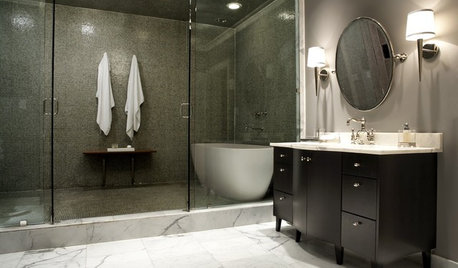
BATHROOM DESIGNHow to Choose Tile for a Steam Shower
In steamy quarters, tile needs to stand up to all that water and vapor in style. Here's how to get it right the first time
Full Story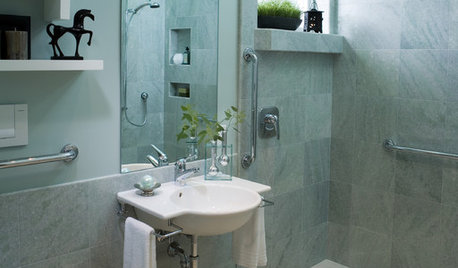
BATHROOM DESIGNHow to Design an Accessible Shower
Make aging in place safer and easier with universal design features in the shower and bathroom
Full Story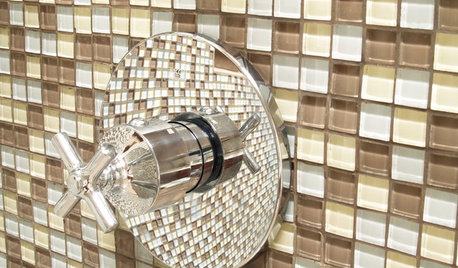
BATHROOM DESIGNConvert Your Tub Space to a Shower — the Fixtures-Shopping Phase
Step 2 in swapping your tub for a sleek new shower: Determine your mechanical needs and buy quality fixtures
Full Story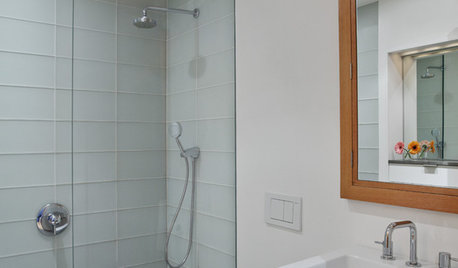
BATHROOM DESIGNConvert Your Tub Space to a Shower — the Planning Phase
Step 1 in swapping your tub for a sleek new shower: Get all the remodel details down on paper
Full Story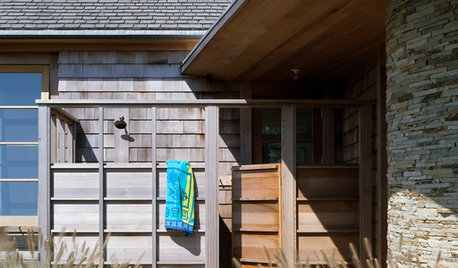
GREAT HOME PROJECTSHow to Add an Outdoor Shower
New project for a new year: Experience bathing in a whole new light with a shower in the fresh air
Full Story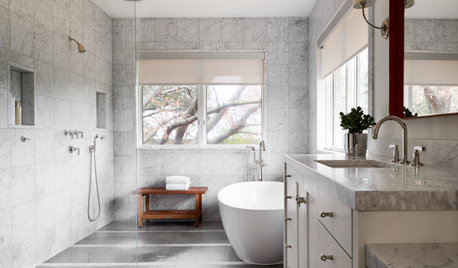
BATHROOM DESIGNDoorless Showers Open a World of Possibilities
Universal design and an open bathroom feel are just two benefits. Here’s how to make the most of these design darlings
Full Story
BATHROOM DESIGNHow to Choose the Best Drain for Your Shower
Don't settle for a cheap fix when you can pick a shower drain that suits your style preferences and renovation codes alike
Full Story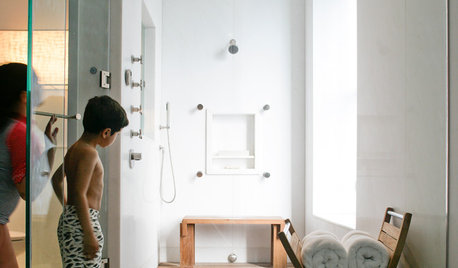
BATHROOM DESIGNHow to Place Shower Controls for Bathing Bliss
Body jets, handhelds and showerheads are only as good as their placement. Here's how to get it right
Full Story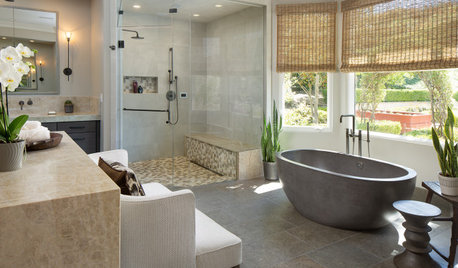
UNIVERSAL DESIGN11 Ways to Age-Proof Your Bathroom
Learn how to create a safe and accessible bathroom without sacrificing style
Full Story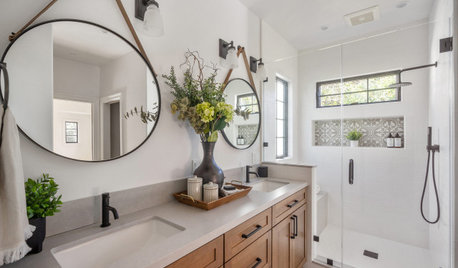
BATHROOM DESIGN5 Common Bathroom Design Mistakes to Avoid
Get your bath right for the long haul by dodging these blunders in toilet placement, shower type and more
Full Story



Joseph Corlett, LLC